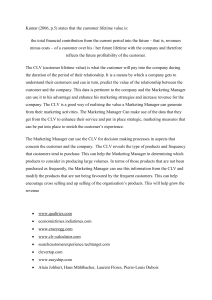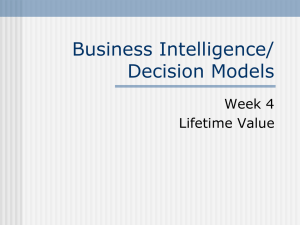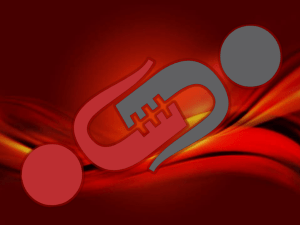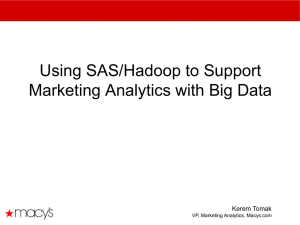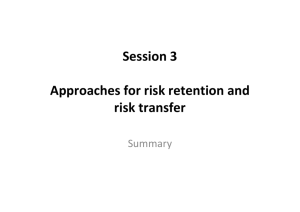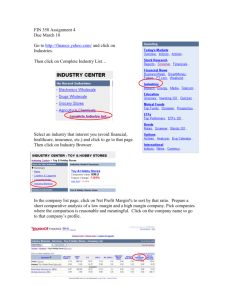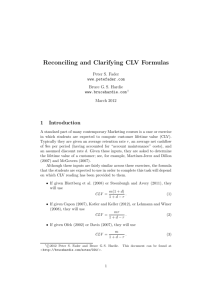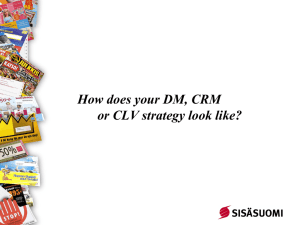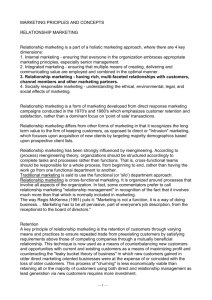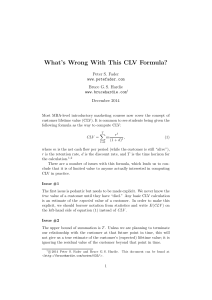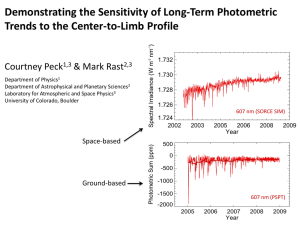Customer Relationship Management: A Database Approach
advertisement
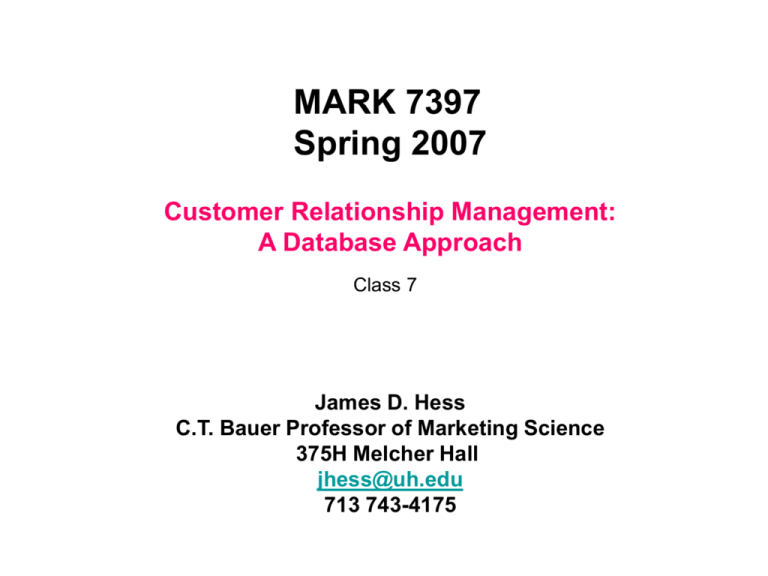
MARK 7397 Spring 2007 Customer Relationship Management: A Database Approach Class 7 James D. Hess C.T. Bauer Professor of Marketing Science 375H Melcher Hall jhess@uh.edu 713 743-4175 Review of CLV approximation before calculating customer assets CLV= St=1 m(1+g)t rt/(1+i)t = m r(1+g) 1+i-r(1+g) where m is contribution margin g is growth rate of margin r is retention rate i is interest rate Note: if the world stopped after T=5 periods then this might exaggerate the total by about 20%. CDNow Customer Acquisition Customer acquisition costs ~ $30-55 Gross margin m ~ $10-20 Growth in margins g ~ 0 Retention rate r ~ .51-.68 Interest rate i ~.12 Best case CLV ~ 20 .68(1+0) = $30.90 1+.12-.68(1+0) Worst case CLV ~ 10 .51(1+0) = $8.36 1+.12-.51(1+0) It does not pay to acquire new customers! Bertelsmann purchase of CDNow Gross margin m ~ $15 Growth in margins g ~ 0 Retention rate r ~ .70 Interest rate i ~.12 Typical CLV ~ 15 .70(1+0) = $25 1+.12-.70(1+0) Size of CDNow house file ~ 3,290,000 customers Value of house file = 253,290,000 = $82 million In July 2000 Bertelsmann bought CDNow for $117 million! Capital One Customer Retention Gross margin m ~ $14*4 Growth in margins g ~ 0.02 Retention rate r ~ .85 or .90 Interest rate i ~.12 Low retention CLV ~ 14*4 .85(1.02) = $192 1+.12-.85(1.02) High retention CLV ~ 14*4 .90(1.02) = $255 1+.12-.90(1.02) Capital One could afford to pay $63 to increase retention rate by 5%. AT&T’s Acquisition of TCI and Media One Customer acquisition costs per customer ~ $4,200 Gross margin m ? Growth in margins g ~ 0 Retention rate r ~ .90 Interest rate i ~.12 Breakeven CLV ~ m .90(1+0) = $4,200 1+.12-.90(1+0) m = $1,027 Profit margin ~ 0.45 Breakeven Sales = $1,027/.45 = $2,280 or $190/month To justify the acquisition, AT&T needs ALL customers to sign up for cable, high speed internet, and cable telephone. This is unrealistic. Can we predict CLV using the past? Prediction is very difficult, especially about the future. Neils Bohr Malthouse and Blattberg took data and pretended to move back to the future: history now future They ran a regression to explain the future CLV using historic variables on the calibration sample. They then used the regression to predict CLV for the validation sample. Actual Bottom 80 Top 20 Bottom 80 85% 55% Top 20 15% 45% Predicted False positive False negative
